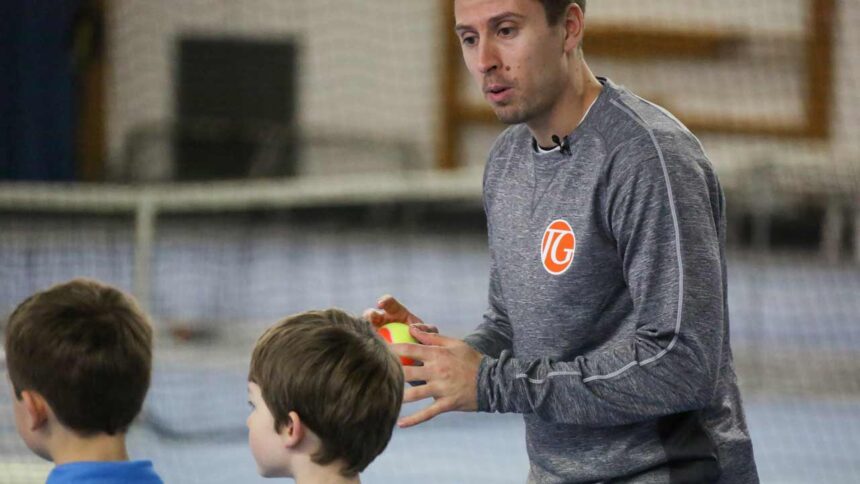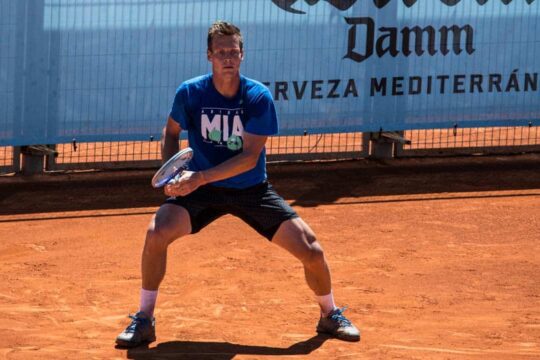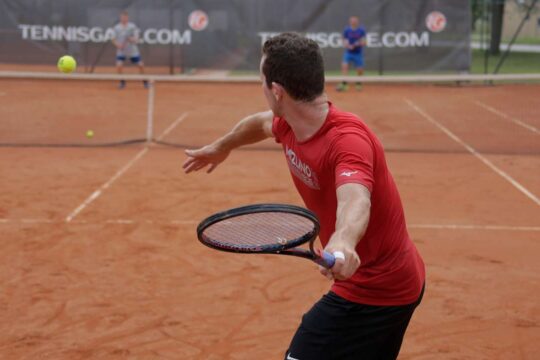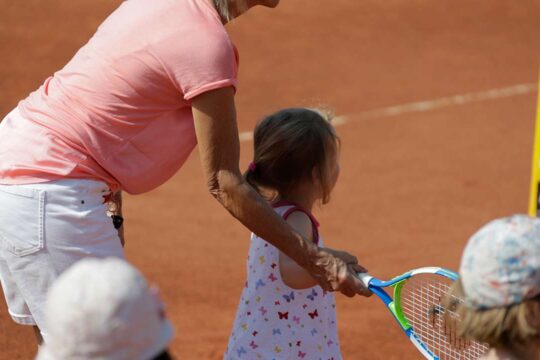On Watching the Ball

“Watch the ball” is probably the most common instruction in tennis, and one would think that after hearing it over and over, lesson after lesson, a player would at some point become proficient enough to master this skill.
However, the reality is that even at the top of the game players still miss shots by failing to follow this simple instruction.
There are two main reasons for this: First, players may not really understand what “watching the ball” really means, and therefore never quite master this skill; and second, “watching the ball” is all about focusing on the task at hand – disciplining the mind to stay in the moment – and that is not easy to do with all the physical and mental distractions of match play.
The best way to explain how to watch the ball in tennis is to start at contact. At contact the eyes have to be solely on the ball. If the player is doing this correctly he/she will catch a glimpse of the racquet swinging by. Then he/she can follow the ball to the other side of the net. As the ball travels away from the player, the focus becomes broader and will allow him/her to perceive other useful cues such the direction of his/her shot, the court-position of the opponent, the effect of his shot on the opponent’s balance, the path and type of the opponent’s swing, etc. But once the opponent makes contact with the ball, the player needs to start narrowing his/her focus more an more until it lays solely on the ball, especially from the bounce to the racquet. And this little mental dance needs to be practiced and practiced until it becomes automatic.
However, even in the case of advanced players that really understand this concept and work on it every time they are on the court, the heat of the battle can easily disrupt the process.
The problem is compounded in the following situations:
- Pressure situations, such as hitting a passing shot, returning a hard serve or when on the full run.
- Situations where the player has extra time, such as facing a high slow volley, a high slow shot in the middle of the court or a “dinky” serve.
- Situations of transition, such as approaching the net.
- Serve. Coaches need to remind their players that a total commitment to the ball is not only appropriate for groundstrokes but also especially important on the serve, where perfect timing and coordination of the different body segments, the racquet and the ball are essential.
In all of these instances players tend to look up too early and fail to track the ball the contact point. These types of mistakes need to be eliminated through improvements in concentration and tracking skills.
Here are a few drills that will help.
BOUNCE – HIT
Players rally or play points shouting “bounce” or “hit” every time, exactly, as the ball bounces or makes contact with the strings, forcing the players to keep their focus on the ball throughout the whole point or rally.
Grip Rally
Players rally with each other hitting high lobs but have to stop the ball with the grip before playing it back. Each player tries to stop the ball with the grip, holding the racquet upside down, from the racquet head, with both hands and keeping the grip at eye level to facilitate contact. They should, then, let the ball bounce once before hitting it over high and deep to their partner. By trying to contact the ball with the grip, players are forced to fully concentrate on the ball all the way to contact.
Butt Cap Rally
Players rally with each other hitting high lobs, but have to stop the ball with the butt cap before playing it back. Each player tries to stop the ball with the butt cap, holding the racquet upside down, from the racquet head, with both hands and keeping the grip at eye level to facilitate contact. They should then let the ball bounce once, before hitting it over, high and deep to their partner. By trying to contact the ball with the butt cap, players are forced to fully concentrate on the ball all the way to contact.
Grip return
On the return of serve it is very easy to lose the ball from the bounce to the racquet. Therefore, it may require extra attention. In this drill, players will position themselves to return serve but will hold their racquets upside down, from the racquet head, with both hands and will try to stop a ball served to them. They should not try to hit the ball, merely stop it. Once again, by trying to contact the ball with the grip, players are forced to fully concentrate on the ball all the way to contact
Watch the seams or the writing
By trying to “distinguish” a specific item on the ball such as the seams or the writing a player is forced to pay close attention to the ball, especially as it gets close to contact.
Watch the racquet swing by
Focusing on watching the racquet swinging through contact will help players maintain focus an keep their head still, allowing them to track the ball better.
Keep you eyes focus on contact/Keep your head still.
In this drill players will keep their head still and the eyes at the contact point a fraction of a second longer. That is they will make contact and not look up right
away. This will not only help their focus at contact but also improve their balance.
Watch the ball after the bounce.
Usually most players do a decent job watching the ball until it bounces. That is where everything starts to break down. Simply instructing the players to focus on the segment from the bounce to the contact point will help them hit a cleaner , more consistent ball.
Watching the ball to contact is a fundamental skill of the game and one every player has to constantly practice. The exercises above are very helpful to remind us what watching the ball correctly really entails. Pick one that works for you best and practice it often, especially under pressure or when things do not seem to be working as well as they should.
Edgar Giffenig




